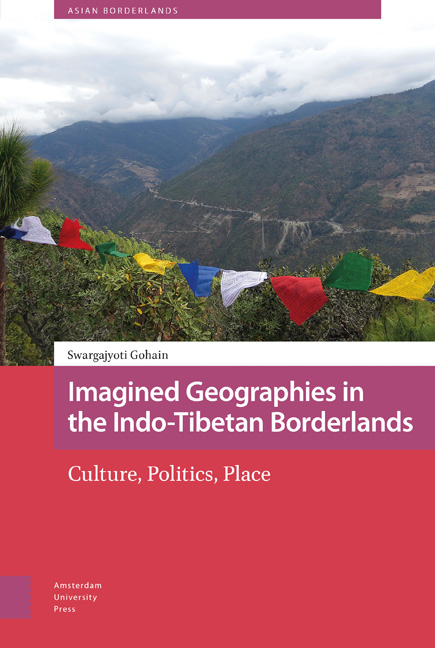Summary
A signboard at the Bhalukpong check point at the Assam-Arunachal Pradesh inter-state border reads ‘Arunachal Pradesh: The Unexplored Paradise’. Located in Northeast India, Arunachal Pradesh comprises sixteen districts, of which Tawang and West Kameng districts form the western flank. Often described as terra incognita or no-man’s-land, Arunachal Pradesh has a relatively low population density of 17 per sq. km., compared to the countrywide average of 382 per sq. km. (Batt 2011). However, the region has always been home to populations described in various literatures as ‘hill tribes’ (Barpujari 1970) or ‘highlanders’ (Furer-Haimendorf 1982). Rather than being a description of actual places, therefore, the term ‘unexplored paradise’ is a projection or, like the fabled Orient (Said 1978), a discursive construction that has the magical quality of expunging past histories and networks through a romantic, uniform, and static vision of space.
What is often forgotten in the use of such terms is that they are rarely indigenously deployed but are instead designations bestowed by external forces. The epitaph of ‘unexplored paradise’ given to Arunachal Pradesh, while invoked for its tourist appeal, encodes the asymmetrical power relations in which Arunachalis find themselves vis-a-vis the contemporary Indian nation. Its use highlights both the marginal status of this state in the national imagination and its contrast to developed, metropolitan, industrial centers such as Mumbai, often described in popular parlance as a ‘teeming metropolis’. This image of a remote frontier attaches to all parts of Arunachal Pradesh, including Monyul, relegating to the background the latter's peculiar history that has returned to influence its present politics.
Monyul and North East India
In pre-colonial times, the areas now comprising Arunachal Pradesh, except for Tibetan-ruled Tawang and West Kameng, were never formally part of any political state. Relations between the Ahom state in the plains of Assam and the hill communities were marked by mutual dependency, embodied through customary law. In the second decade of the nineteenth century, the British colonial rulers annexed Assam – decades after other parts of India had already been colonized – and established a policy of loose administration in the frontier hill tracts. Concerned with protecting British commercial industries of tea, coal, and oil in the foothills and plains areas, the colonial government instituted the inner line through the Bengal Eastern Frontier Regulation of 1873.
- Type
- Chapter
- Information
- Imagined Geographies in the Indo-Tibetan BorderlandsCulture, Politics, Place, pp. 45 - 66Publisher: Amsterdam University PressPrint publication year: 2020



